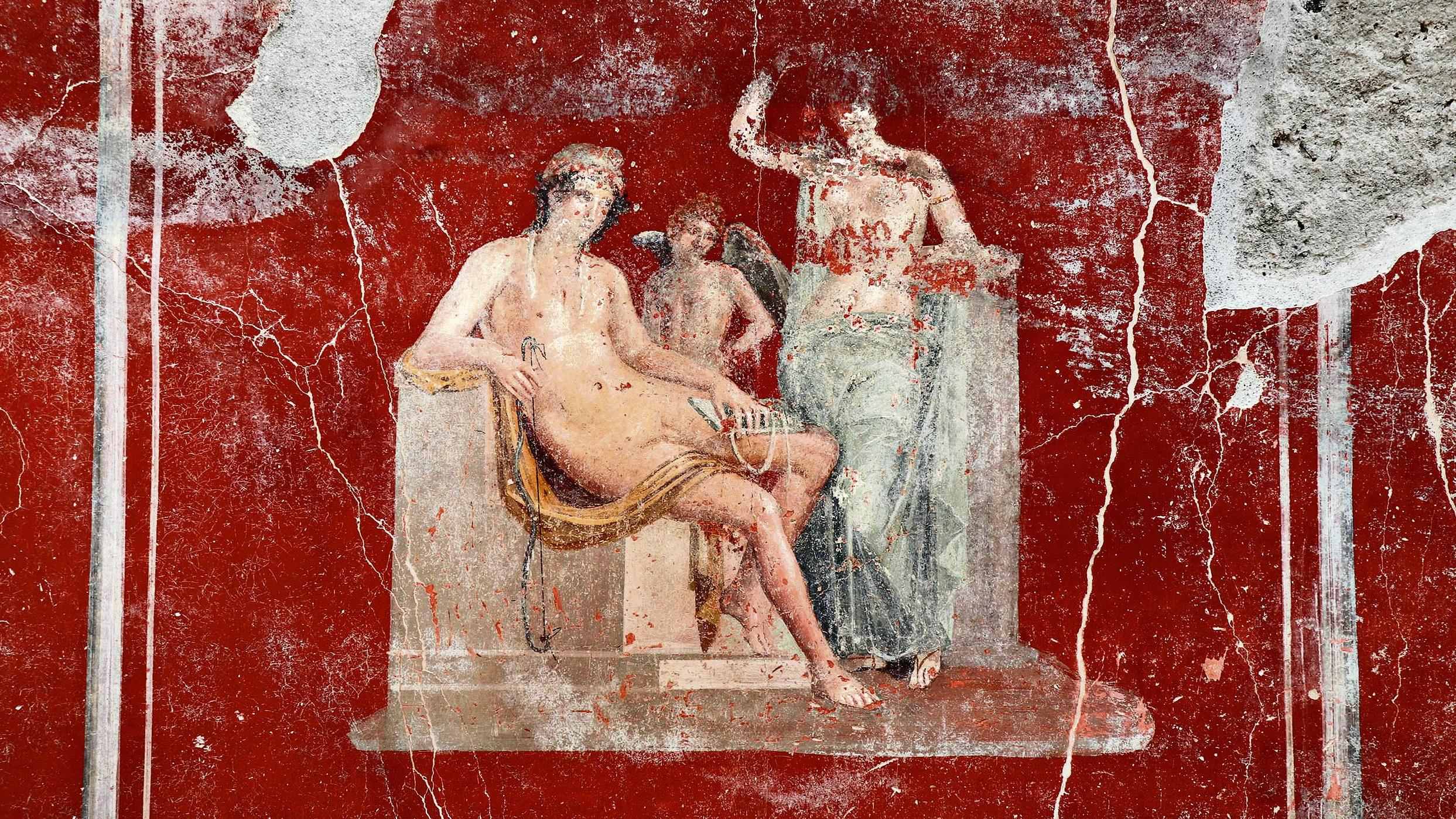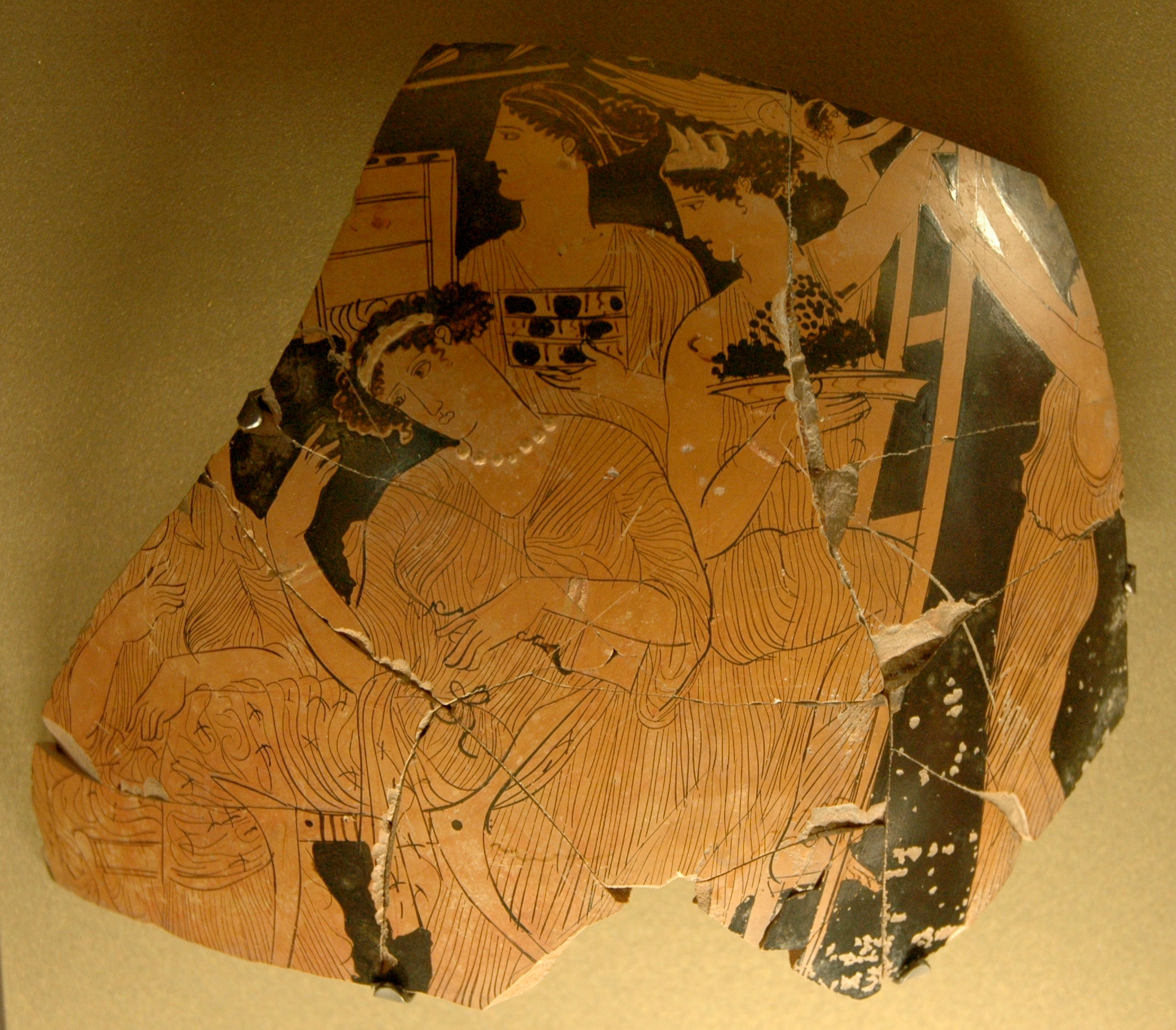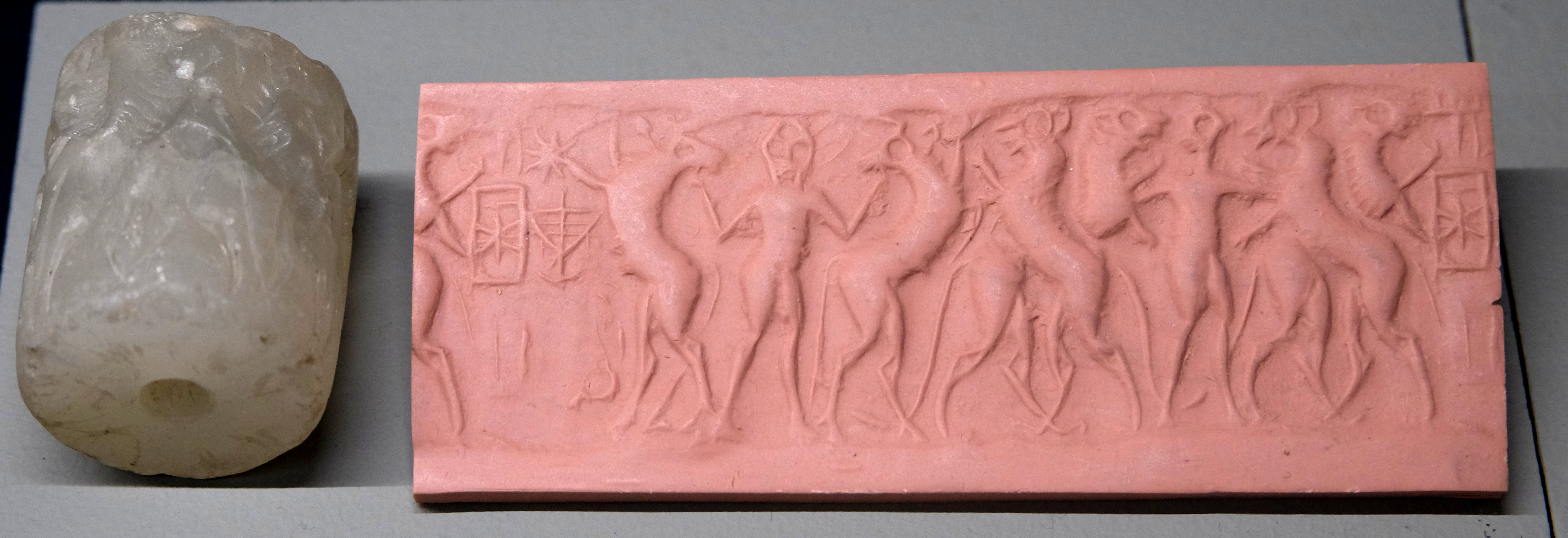|
Adonis
In Greek mythology, Adonis, ; derived from the Canaanite word ''ʼadōn'', meaning "lord". R. S. P. Beekes, ''Etymological Dictionary of Greek'', Brill, 2009, p. 23. was the mortal lover of the goddess Aphrodite. One day, Adonis was gored by a wild boar during a hunting trip and died in Aphrodite's arms as she wept. His blood mingled with her tears and became the anemone flower. Aphrodite declared the Adonia festival commemorating his tragic death, which was celebrated by women every year in midsummer. During this festival, Greek women would plant "gardens of Adonis", small pots containing fast-growing plants, which they would set on top of their houses in the hot sun. The plants would sprout, but soon wither and die. Then the women would mourn the death of Adonis, tearing their clothes and beating their breasts in a public display of grief. The Greeks considered Adonis's cult to be of Near Eastern origin. Adonis's name comes from a Canaanite word meaning "lord" and most m ... [...More Info...] [...Related Items...] OR: [Wikipedia] [Google] [Baidu] |
Aphrodite
Aphrodite ( ; grc-gre, Ἀφροδίτη, Aphrodítē; , , ) is an ancient Greek goddess associated with love, lust, beauty, pleasure, passion, and procreation. She was syncretized with the Roman goddess . Aphrodite's major symbols include myrtles, roses, doves, sparrows, and swans. The cult of Aphrodite was largely derived from that of the Phoenician goddess Astarte, a cognate of the East Semitic goddess Ishtar, whose cult was based on the Sumerian cult of Inanna. Aphrodite's main cult centers were Cythera, Cyprus, Corinth, and Athens. Her main festival was the Aphrodisia, which was celebrated annually in midsummer. In Laconia, Aphrodite was worshipped as a warrior goddess. She was also the patron goddess of prostitutes, an association which led early scholars to propose the concept of " sacred prostitution" in Greco-Roman culture, an idea which is now generally seen as erroneous. In Hesiod's '' Theogony'', Aphrodite is born off the coast of Cythera from ... [...More Info...] [...Related Items...] OR: [Wikipedia] [Google] [Baidu] |
Myrrha
Myrrha (Greek: , ''Mýrra''), also known as Smyrna (Greek: , ''Smýrna''), is the mother of Adonis in Greek mythology. She was transformed into a myrrh tree after having had intercourse with her father, and gave birth to Adonis in tree form. Although the tale of Adonis has Semitic roots, it is uncertain where the myth of Myrrha emerged from, though it was probably from Cyprus. The myth details the incestuous relationship between Myrrha and her father, Cinyras. Myrrha falls in love with her father and tricks him into sexual intercourse. After discovering her identity, Cinyras draws his sword and pursues Myrrha. She flees across Arabia and, after nine months, turns to the gods for help. They take pity on her and transform her into a myrrh tree. While in plant form, Myrrha gives birth to Adonis. According to legend, the aromatic exudings of the myrrh tree are Myrrha's tears. The most familiar form of the myth was recounted in the ''Metamorphoses'' of Ovid, and the story was the ... [...More Info...] [...Related Items...] OR: [Wikipedia] [Google] [Baidu] |
Adonia
The Adonia (Greek: ) was a festival celebrated annually by women in ancient Greece to mourn the death of Adonis, the consort of Aphrodite. It is best attested in classical Athens, though other sources provide evidence for the ritual mourning of Adonis elsewhere in the Greek world, including Hellenistic Alexandria and Argos in the second century AD. According to Ronda R. Simms in her article, "Mourning and Community at the Athenian Adonia", the celebration of the Adonia was the only evidence that was found about worship of Adonis in Athens, as of 1997. There were no temples, statues, or priests in worship to Adonis. Athenian festival In Athens, the Adonia took place annually, and was organised and celebrated by women. It was one of a number of Athenian festivals which were celebrated solely by women and addressed sexual or reproductive subjects – others included the Thesmophoria, Haloa, and Skira. Unlike these other festivals, however, the Adonia was not state-organised, ... [...More Info...] [...Related Items...] OR: [Wikipedia] [Google] [Baidu] |
Tammuz
Dumuzid or Tammuz ( sux, , ''Dumuzid''; akk, Duʾūzu, Dûzu; he, תַּמּוּז, Tammûz),; ar, تمّوز ' known to the Sumerians as Dumuzid the Shepherd ( sux, , ''Dumuzid sipad''), is an ancient Mesopotamian god associated with shepherds, who was also the first and primary consort of the goddess Inanna (later known as Ishtar). In Sumerian mythology, Dumuzid's sister was Geshtinanna, the goddess of agriculture, fertility, and dream interpretation. In the ''Sumerian King List'', Dumuzid is listed as an antediluvian king of the city of Bad-tibira and also an early king of the city of Uruk. In ''Inanna's Descent into the Underworld'', Inanna perceives that Dumuzid has failed to properly mourn her death and, when she returns from the Underworld, allows the '' galla'' demons to drag him down to the Underworld as her replacement. Inanna later regrets this decision and decrees that Dumuzid will spend half the year in the Underworld, but the other half of the year with her, w ... [...More Info...] [...Related Items...] OR: [Wikipedia] [Google] [Baidu] |
Dumuzid The Shepherd
Dumuzid or Tammuz ( sux, , ''Dumuzid''; akk, Duʾūzu, Dûzu; he, תַּמּוּז, Tammûz),; ar, تمّوز ' known to the Sumerians as Dumuzid the Shepherd ( sux, , ''Dumuzid sipad''), is an ancient Mesopotamian god associated with shepherds, who was also the first and primary consort of the goddess Inanna (later known as Ishtar). In Sumerian mythology, Dumuzid's sister was Geshtinanna, the goddess of agriculture, fertility, and dream interpretation. In the ''Sumerian King List'', Dumuzid is listed as an antediluvian king of the city of Bad-tibira and also an early king of the city of Uruk. In '' Inanna's Descent into the Underworld'', Inanna perceives that Dumuzid has failed to properly mourn her death and, when she returns from the Underworld, allows the '' galla'' demons to drag him down to the Underworld as her replacement. Inanna later regrets this decision and decrees that Dumuzid will spend half the year in the Underworld, but the other half of the year with her ... [...More Info...] [...Related Items...] OR: [Wikipedia] [Google] [Baidu] |
Adonis (Duquesnoy)
''Adonis'', also known as ''Adonis Mazarin'', is a marble sculpture by Flemish artist François Duquesnoy, who completed it in the early 17th century. The Adonis bears the signature of Duquesnoy, and the statue, created around an ancient torso, should be indeed accepted as "a veritable artistic creation f Duquesnoy. It depicts Adonis, the mortal lover of the goddess Aphrodite in Greek mythology. The backward tilt of the figure is reminiscent of Duquesnoy's bronze Mercury. The sculpture is housed at The Louvre in Paris. Subject The subject of the sculpture is Adonis, offspring of the incestuous love between Myrrha and her own father, the king of Cyprus. Myrrha tricked her own father into having coitus with her, but he discovered her identity and chased her with a sword. Myrrha then pleaded to the gods, who transformed her into a myrrh tree. In the tree form, she gave birth to Adonis. Aphrodite found the infant; she was charmed by its beauty, put it into a box (according to tra ... [...More Info...] [...Related Items...] OR: [Wikipedia] [Google] [Baidu] |
Dying-and-rising Deity
A dying-and-rising, death-rebirth, or resurrection deity is a religious motif in which a god or goddess dies and is resurrected.Leeming, "Dying god" (2004)Miles 2009, 193 Examples of gods who die and later return to life are most often cited from the religions of the ancient Near East, and traditions influenced by them include Greco-Roman mythology. The concept of a dying-and-rising god was first proposed in comparative mythology by James Frazer's seminal ''The Golden Bough'' (1890). Frazer associated the motif with fertility rites surrounding the yearly cycle of vegetation. Frazer cited the examples of Osiris, Tammuz, Adonis and Attis, Zagreus, Dionysus, and Jesus. Frazer's interpretation of the category has been critically discussed in 20th-century scholarship, to the conclusion that many examples from the world's mythologies included under "dying and rising" should only be considered "dying" but not "rising", and that the genuine dying-and-rising god is a characteristi ... [...More Info...] [...Related Items...] OR: [Wikipedia] [Google] [Baidu] |
Anemone
''Anemone'' () is a genus of flowering plants in the buttercup family Ranunculaceae. Plants of the genus are commonly called windflowers. They are native to the temperate and subtropical regions of all continents except Australia, New Zealand and Antarctica. The genus is closely related to several other genera including '' Anemonoides'', '' Anemonastrum'', '' Hepatica'', and '' Pulsatilla''. Some botanists include these genera within ''Anemone''. Description ''Anemone'' are perennials that have basal leaves with long leaf-stems that can be upright or prostrate. Leaves are simple or compound with lobed, parted, or undivided leaf blades. The leaf margins are toothed or entire. Flowers with 4–27 sepals are produced singly, in cymes of 2–9 flowers, or in umbels, above a cluster of leaf- or sepal-like bracts. Sepals may be any color. The pistils have one ovule. The flowers have nectaries, but petals are missing in the majority of species. The fruits are ovoid to obovoid sha ... [...More Info...] [...Related Items...] OR: [Wikipedia] [Google] [Baidu] |
François Duquesnoy
François Duquesnoy or Frans Duquesnoy (12 January 1597 – 18 July 1643) was a Flemish Baroque sculptor who was active in Rome for most of his career. His idealized representations are often contrasted with the more emotional character of Bernini's works, while his style shows a great affinity to Algardi's sculptures. Early years Duquesnoy was born in Brussels. Having come from Flanders, Duquesnoy was called ''Il Fiammingo'' by the Italians and ''François Flamand'' by the French. His father, Jerôme Duquesnoy the Elder, sculptor of the ''Manneken Pis'' fountain in Brussels (1619), was the court sculptor to Archduchess Isabella and Archduke Albert, governor of the Low Countries. Sculptor Jerôme Duquesnoy, the younger was his brother. Some of Francois' early work in Brussels attracted the notice of the Archduke, who gave him the wherewithal to study in Rome, where he would spend his whole career. According to early biographers, when Duquesnoy arrived in Rome in 1618, he st ... [...More Info...] [...Related Items...] OR: [Wikipedia] [Google] [Baidu] |
Cinyras
In Greek mythology, Cinyras (; grc, Κινύρας – ''Kinyras'') was a famous hero and king of Cyprus. Accounts vary significantly as to his genealogy and provide a variety of stories concerning him; in many sources he is associated with the cult of Aphrodite on Cyprus, and Adonis, a consort of Aphrodite, is mentioned as his son. Some scholars have proposed a connection with the minor Ugaritic deity Kinnaru, the god of the lyre. The city Cinyreia on Cyprus was believed to have taken its name from Cinyras. According to Strabo, he had previously ruled in the city of Byblos in Phoenicia. Biography The name Cinyras does not appear again until he is mentioned by Pindar as "beloved of Apollo," and the priest of Aphrodite. Pindar mentions Cinyras as being fabulously rich in ''Nemean Ode 8'' line 18. Later, in Greek and Roman literature and in the Christian fathers such as Clement of Alexandria, the story of Cinyras is elaborated. They say that on Cyprus, Cinyras was reve ... [...More Info...] [...Related Items...] OR: [Wikipedia] [Google] [Baidu] |
Inanna
Inanna, also sux, 𒀭𒊩𒌆𒀭𒈾, nin-an-na, label=none is an ancient Mesopotamian goddess of love, war, and fertility. She is also associated with beauty, sex, divine justice, and political power. She was originally worshiped in Sumer under the name "Inanna", and later by the Akkadians, Babylonians, and Assyrians under the name Ishtar, (occasionally represented by the logogram ). She was known as the " Queen of Heaven" and was the patron goddess of the Eanna temple at the city of Uruk, which was her main cult center. She was associated with the planet Venus and her most prominent symbols included the lion and the eight-pointed star. Her husband was the god Dumuzid (later known as Tammuz) and her , or personal attendant, was the goddess Ninshubur (who later became conflated with the male deities Ilabrat and Papsukkal). Inanna was worshiped in Sumer at least as early as the Uruk period ( 4000 BCE – 3100 BCE), but she had little cult activity before the conqu ... [...More Info...] [...Related Items...] OR: [Wikipedia] [Google] [Baidu] |
Phoenix (son Of Agenor)
In Greek mythology, Phoenix or Phoinix (Ancient Greek: Φοῖνιξ ''Phoinix'', ''gen''.: Φοίνικος means "sun-red") was the eponym of Phoenicia who together with his brothers were tasked to find their abducted sister Europa. Family Phoenix was a son of King Agenor of Tyre by either Telephassa,Apollodorus3.1.1 Moschus, ''Europa'37 ff./ref> Argiope, Antiope,Scholiast on Euripides, ''Phoenician Women'' 5; Tzetzes, ''Chiliades'7.165–166/ref> Damno or Tyro.Malalas, ''Chronographia'2.30/ref> He was the brother of Europa, Cadmus, Cilix, Syros, Isaia and Melia.Gantz, p. 208; Pherecydes fr. 21 Fowler 2000, p. 289 = ''FGrHist'' 3 F 21 = Scholia on Apollonius Rhodius, ''Argonautica'' 3.1177-87f In some accounts, Phoenix's father was called King Belus of Eypt and sibling to Agenor, Phineus, Aegyptus, Danaus and Ninus. In the latter's version of the myth, Phoenix' mother could be identified as Achiroe, naiad daughter of the river-god Nilus. Phoenix was believed to have f ... [...More Info...] [...Related Items...] OR: [Wikipedia] [Google] [Baidu] |





.jpg)


